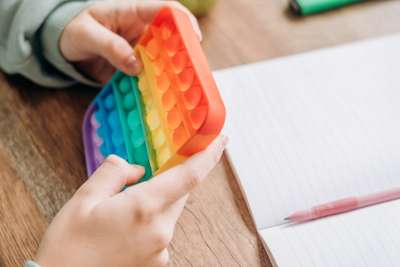Marlee Chizhevsky is a licensed learning behavior specialist, special education teacher, case manager, and curriculum writer, based in Chicago, Illinois, with a focus on neuroeducation and brain-based learning research.
Here she shares inclusive practices and strategies that teachers can use to create an inclusive learning environment in their classrooms.

An inclusive classroom is one in which all students, regardless of race, gender, religion, ability, or any other defining factor, feel safe, supported, and have a sense of belonging. Research shows that student learning is enhanced and students excel more academically in settings that promote an inclusive education. Schools are growing increasingly diverse, which means that classrooms look different now than they did years ago. As teachers, we must continuously modify our practices and implement teaching strategies that ensure every learner feels included in our classroom, thus leading to better learning experiences and outcomes.
Creating An Inclusive Classroom Environment
In the classroom, inclusive teaching strategies include a wide range of teaching practices and techniques that accommodate learners with diverse backgrounds, disabilities, and additional needs. The primary goal is to make your classroom a place where students feel safe and supported enabling them to thrive. There are many teaching methods for creating an inclusive classroom, and approaches will vary depending on the context, setting, and needs of all students. These strategies offer three simple ways to begin creating a more inclusive learning environment.
Respect Names and Pronouns
Learning how to correctly say your students’ names is really important. The best way to do this without singling anyone out is to ask every student how to say their name, even if it seems obvious. Students with conventional spellings might still have unique pronunciations, and vice versa. In addition, asking students for their preferred names promotes inclusiveness because it allows students to self-identify and be who they are. Asking for their preferred names and then using said names shows that you respect your students as individuals.
Pronouns can be a sensitive subject for some students, so we should approach this topic with care. Create a safe space for students to share their preferred pronouns. A simple and discreet way to do this is by sharing a Google Forms survey at the beginning of the year; you can ask students for their pronouns and preferred names in the Google Form, which only you will see. Leave space for any additional comments, or for students to explain if their names and pronouns are public knowledge or not.
Use Inclusive Language
Inclusive language is often overlooked. Avoid using gendered language, as well as any language that makes assumptions about students. For instance, rather than addressing the class as “ladies and gentlemen,” use something more gender-neutral, like scholars, friends, readers, scientists, team, awesome humans, etc. Using gender-neutral language affirms all students and doesn’t exclude anyone.
Inclusive language can also be valuable when it comes to students’ home lives. Using “mom” or “dad” in reference to your students’ caregivers assumes that every student has a family with a mother and a father, which can isolate kids who do not. Easy alternatives include parents, folks, caregivers, grownups, or guardians.
Teach in a Variety of Ways
Not every student learns the same way, so the days of solely relying on teacher lectures are over. Teaching to multiple senses and learning styles not only increases engagement but helps with retention because it builds connections in multiple parts of the brain. If you’re unsure how to implement different modes of instruction, look into Universal Design for Learning (UDL) principles to find research-based guidelines and a plethora of additional resources to guide you!
An inclusive classroom should allow everyone to feel as though they belong. If a student does not feel safe and secure in your classroom, their brain will not be ready to learn. Implementing these simple inclusive practices and teaching strategies will help to create a space where every student can learn and flourish.






